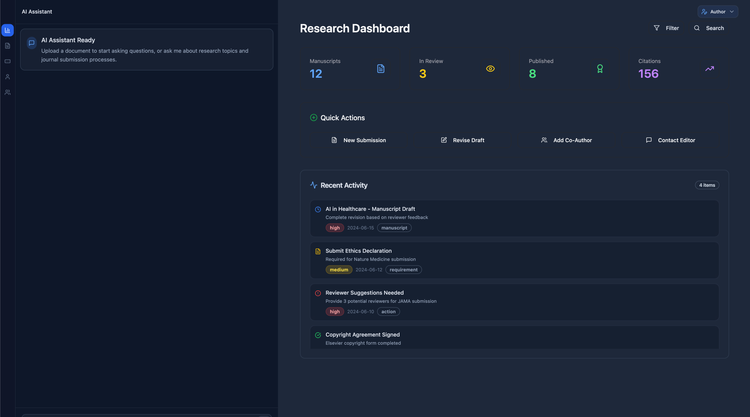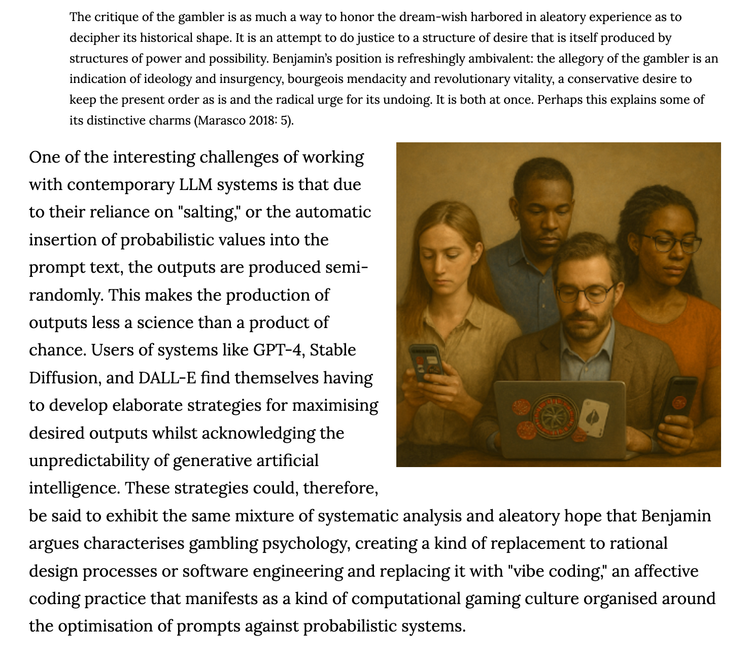The Challenges and Opportunities of Researcher-Driven Publishing

In recent years, the landscape of scholarly communication has experienced significant shifts. Among these changes is the rise of preprints, which have made the publishing process more accessible by simplifying many of its complex components. While this shift is largely positive, it also brings a unique set of challenges. By obscuring the intricacies of publishing, we risk creating an environment where researchers, though empowered, may not fully grasp the underlying complexities. This issue is particularly relevant as we consider the role of researcher-driven publishing.
Core Challenges
For researchers to effectively play more of a role in the publishing space, several key issues need resolution. These challenges can be categorized into three main areas:
A Complex Ecosystem of Protocols and Standards
The scholarly publishing ecosystem is governed by a complex web of technical protocols and standards designed to ensure interoperability, data integrity, and a host of other critical functions. Researchers must navigate this intricate landscape to effectively participate and share their work. While many systems, such as DataCite and Crossref, along with standards and persistent identifiers (PIDs) like ORCID, ROR, and DOIs, are well-known to researchers, they represent just the tip of the iceberg. Even these systems are complex to interact with. For instance, researchers might be familiar with DataCite, but understanding how to format valid data and register it with DataCite is a different challenge altogether, one that many researchers would not know how to manage.
The challenge lies in the vastness and complexity of this ecosystem and the difficulty in interacting with it. Many of these systems may need to be triaged but first, researchers must determine which systems are relevant to their work. Yet even after this triage, the question remains: how do researchers integrate what remains into their workflows?
Broken (Decoupled) Technical Environment
The current technical environment for publishing is fragmented, with various tools and platforms often failing to integrate seamlessly by design. Traditional journals managed many of these complexities through internally built tools that wrangled information between systems. However, the shift to an open ecosystem demands greater consistency than the walled technical gardens maintained within individual journals. In this decoupled ecosystem, there is ironically less control over each part of the toolchain. We cannot simply 'wrangle' data between services; the services themselves must be capable of seamless exchange.
This open ecosystem, while promising greater accessibility and innovation, presents significant challenges. The lack of standardization and seamless integration complicates the workflow for researchers, who must now juggle multiple platforms and tools that do not always communicate well with each other. The task of reassembling this fragmented system into a functional, open environment is daunting and requires concerted effort and collaboration across the scholarly community.
Usability
The complexity of the current systems are a significant barrier for scholars who lack the technical expertise of publishers. Researchers, who are not publishers, must interact with systems designed by and for publishers. We need to enable these (by definition) 'non-experts' to interact with this ecosystem effectively.
The challenge is to reduce overall complexity for the user. Unlike publishers who employ specialist staff, researchers must navigate these systems independently.
The Way Forward
To address these challenges and pave the way for a more efficient, researcher-driven publishing ecosystem, the scholarly community must develop robust and innovative solutions. Here are some key strategies:
Ecosystem Design : Reduce Complexity, Remove Old Systems
The first step is to embark on a deliberate redesign process to simplify the ecosystem by identifying and discarding outdated or redundant systems. Focus should be on targeting high-value systems that truly add significant benefit to researchers. Streamlining the number of systems researchers need to engage with will reduce cognitive load and make it easier for them to manage their publishing activities, providing a solid foundation for conducting a gap analysis to identify what new systems need to be built.
Ecosystem Design : Design New, Simpler, Systems
In addition to discarding outdated mechanisms, we must begin constructing new, elegant systems to populate the open ecosystem and meet our current needs. If we eliminated all the excessively old mechanisms, we would undoubtedly encounter gaps that need to be filled. However, these new solutions should not replicate the overly complex functions of their predecessors. Instead, there needs to be a deliberate effort to reduce complexity within the ecosystem and bridge these gaps meaningfully.
System Design : Developing Comprehensive Automated Tools
Automated tools should be developed to remove complexity on all levels. These tools can, for example, pull necessary metadata directly from research data and documents, ensuring it is correctly formatted for sending to other systems. By automating these tasks, we can significantly reduce the manual workload on researchers to share research effectively.
System Design : Improving Interoperability
While the need for better interoperability is widely acknowledged, the implementation requires a nuanced approach. Instead of merely connecting systems, we need to focus on creating intelligent interoperability that adapts to the specific needs of the technical ecosystem. This involves developing adaptive middleware that can translate and harmonize data across different platforms and standards without requiring manual intervention. Additionally, establishing dynamic APIs that evolve with changing standards and technologies can ensure long-term sustainability and compatibility. These efforts should aim to create a seamless user experience where the underlying complexity of multiple systems is hidden from the researcher.
User Experience Design : Making Operations Easy
To truly empower researchers, the tools and processes they use must be exceptionally user-friendly. While this may seem self-evident, I believe we need to elevate ease of use to an entirely new level.
We must remove the reliance on expert specialization by developing interfaces that are intuitive and easy for anyone to use. Researchers should not need to be experts in publishing to use these systems effectively. This requires rethinking processes and building systems that manage complexity on behalf of the user.
Tools and platforms must be designed with usability in mind. Developing intuitive interfaces that simplify complex processes will make these tools more accessible, enabling researchers to engage more deeply with their work rather than worrying about nuanced 'acts of sharing' (publishing). Achieving this is far from simple.
The AI Moment
What fascinates me is that AI, when coupled with good system, ecosystem, and UX design, can be transformative and can help us deliver on these ideas. We have a unique opportunity to redesign these systems in ways that were previously unimaginable without the assistance of AI.
AI can play a pivotal role in developing more sophisticated automated tools that extract and format metadata from research documents with high accuracy. Semantic machines can be leveraged quite cheaply to recognize and process various types of research outputs, finding and ensuring that metadata is present and correctly formatted.
AI can also facilitate intelligent interoperability by creating adaptive middleware that seamlessly translates and harmonizes data across different platforms and standards. This can significantly reduce the need for manual intervention and ensure that systems remain compatible with evolving standards.
The cost effective adaptability of AI tools can also be leveraged to assist researchers in specialized domains. This capability addresses a major issue in the current state of technology within scholarly communications, where adapting to specialized needs is often expensive.
Semantic machines can significantly reduce the complexity of these processes by automating many of the intricate tasks. However, this automation is not without cost. AI systems require thorough validation and quality assurance processes that must be carefully designed and implemented. As researchers take on a more prominent role in sharing their research, AI will play an increasingly vital part as well. Initially, this will likely lead to many errors. However, as researchers gain experience, AI becomes more accurate, and systems become more user-friendly, we can expect the error rate to gradually decrease, eventually approaching zero.
However, it is notable that triaging systems to achieve this scenario, as well as developing intuitive user interfaces and enhancing user experience, remain tasks that require human ingenuity. We must be the deliberate architects of this ecosystem. Building systems that simplify the sharing of research and make complex tasks more manageable is a design challenge that relies on understanding the complexity that needs to be reduced as well as understanding human behavior, preferences, and needs.
A Hypothetical
As an example, we can imagine a researcher uploading their latest paper to a preprint server. In the background, an AI-powered system analyzes the document, automatically extracting key metadata like author names, affiliations, funding sources, and references. Machines (either mechanically or semantically) cross-check these against authoritative databases like ORCID, ROR, and Crossref to ensure accuracy and consistency. The AI also semantically parses the full text, identifying the main concepts, methods, and findings discussed. It suggests controlled vocabulary terms and links to relevant ontologies. The researchers then QA the content and outputs via elegant interfaces. All of this rich, structured metadata is then transparently packaged by the AI 'middleware' in the correct data structures ready to be sent to APIs, and ingested by discovery systems, research databases, and knowledge graphs. No publisher in sight and a system that achieves the same or better result while freeing the researcher from the tedious and error-prone task of manually entering metadata and ensures their work is more findable, accessible, and reusable from the moment of 'publication'.
Layer community commentary on this and we have something.
Ultimately, our initial primary objective might be to build systems that achieve scenarios similar to those described above, hiding complexity while continually enhancing quality. Our main goal could then very well become developing systems that facilitate coordination and collaboration among people.
Conclusion
The rise of preprints has undeniably transformed the landscape of scholarly communication, making the publishing process more accessible and inclusive. However, this shift has also introduced new challenges, revealing the complexities and intricacies that underlie the publishing ecosystem. Researchers, now more empowered than ever, face the daunting task of navigating a fragmented and intricate landscape filled with outdated protocols and standards. The move towards an open ecosystem, while promising greater accessibility and innovation, demands a delicate balance between simplicity and functionality.
To truly revolutionize researcher-driven publishing, we must focus on creating elegant, user-friendly systems that simplify the process without sacrificing the quality and integrity of scholarly communication. By leveraging the transformative power of AI, we can develop sophisticated automated tools and intelligent interoperability solutions that reduce manual workloads and enhance data exchange across platforms. Yet, the triaging of systems and the development of intuitive user interfaces remain tasks that require human creativity and insight. Only by addressing these challenges with innovative, human-centered design can we build a robust and efficient publishing environment that fully realizes the potential of researchers as drivers of innovation in scholarly communication.
© Adam Hyde, 2024, CC-BY-SA
Image public domain, created by MidJourney from prompts by Adam.






Member discussion